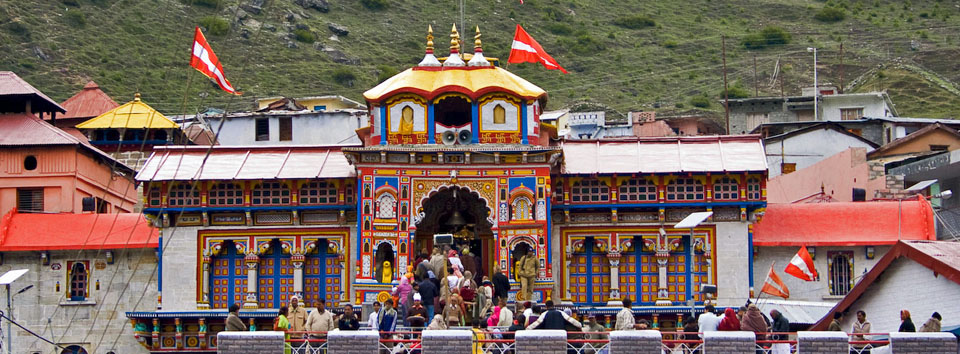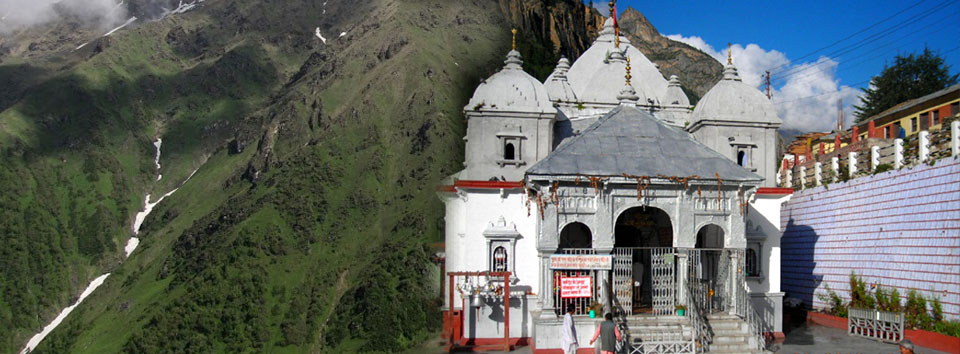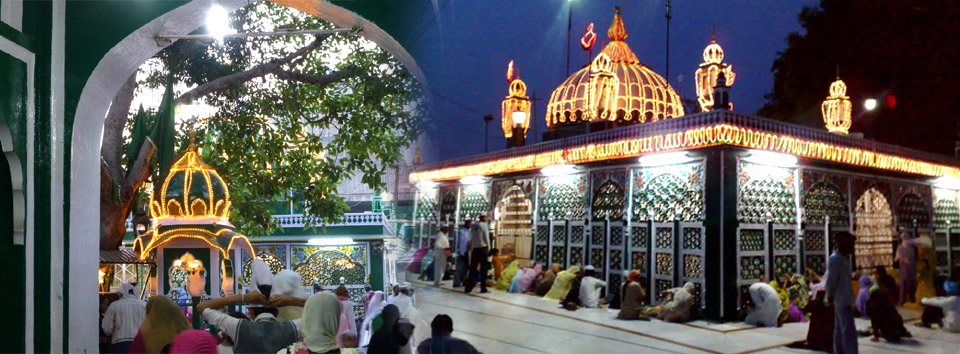India’s obsession with religion finds perfect expression in the hill state of Uttarakhand, which is aptly called ‘Devbhumi’ (Land of Gods). People from far-off lands, including NRIs, visit sacred places in the state to attain salvation and wash away their sins. One of the most prestigious pilgrimage circuits of the country, christened ‘Char Dham’ , includes a visit to Badrinath (the seat of Lord Vishnu), Kedarnath (the seat of Lord Shiva), Gangotri and Yamunotri (the origin point of the sacred rivers Ganga and Yamuna). The state is also home to the city of Haridwar (gateway to the land of Gods) , located across the sacred waters of river Ganga. The festival of Kumbh, which is the biggest conglomeration of devotees in the world, is organised here every 12 years. In addition, Uttarakhand is also famous around the world for its many centres which teach the intricacies of Yoga and Ayurveda to overcome the travails of modern living and to promote a healthy lifestyle.
Badrinath is surrounded by the Himalayas, nestling between the mountain ranges of Nar and Narayan in the Chamoli district of Uttarakhand. The main deity here is the meditating Lord Vishnu. The term Badrinath is derived from Badri, which means a place where berries grow abundantly. There is also a hot water spring christened ‘Tapt Kund’ located along the river Alaknanda in front of the temple there. The door of the temple opens during April and is closed in the third week of November as winter sets in and snow falls.
Another destination in the Char Dham pilgrimage is Kedarnath. This is home to the famous temple dedicated to Lord Shiva. Legend has it that in order to evade the Pandavas, Lord Shiva took the form of a bull and hid at Kedarnath, and when he was noticed by the Pandavas, the diety buried himself in the earth, leaving just the bull's hump on surface. The picturesque location allows visitors to feel one with nature.
Gangotri is the place from where the river Ganga originates and then flows through the different states of India. It is believed that Goddess Ganga took the shape of a river to wash away the sins of the forefathers of King Bhagirath. Legend says that to reduce impact of the fall, Lord Shiva collected Ganga into his matted locks. This region is characterised by majestic glaciers and snow capped mountains.
Yamunotri is where the majestic river Yamuna originates and is famous for its glaciers and hot springs. It is believed that the river is the sister of Yama, the Lord of Death and that those who take a holy dip in the river secure a painless death.
Uttarakhand is not only famous for its temples but is also a religious abode of Muslims and Sikhs. Piran Kaliyar Sharif or the tomb of saint Alladin Ali Ahmad Sabir near Roorkee is a well known pilgrimage site for Muslims. It is believed that saint Sabir undertook great penance and did not eat any food for several years.
There is also the Gurudwara Hemkund Sahib, which is a pilgrimage centre for Sikhs. It has been built on the banks of a beautiful lake, nestled amidst the majestic mountains.
Uttarakhand is also synonymous with Yoga and Ayurveda, which are evolved sciences of India promoting a healthy, balanced and spiritual life. Both Yoga and Ayurveda offer a holistic approach to achieving mental and physical well-being through diet, exercise, breathing practices, herbal remedies, meditation and physical therapy. Many centres have come up in different parts of Uttarakhand to impart training in the intricacies of Yoga and Ayurveda.
Read more India News, Travel News and Know your India here







